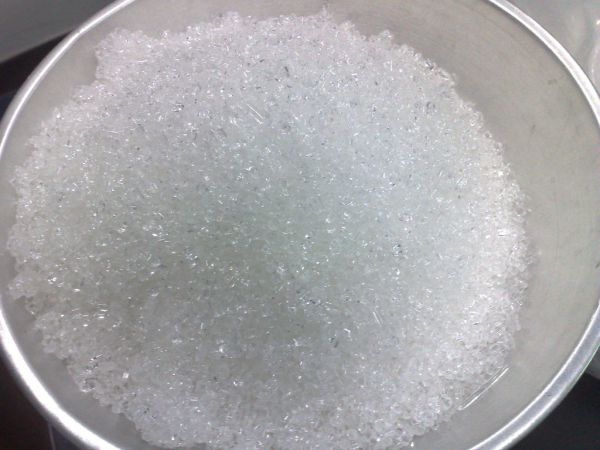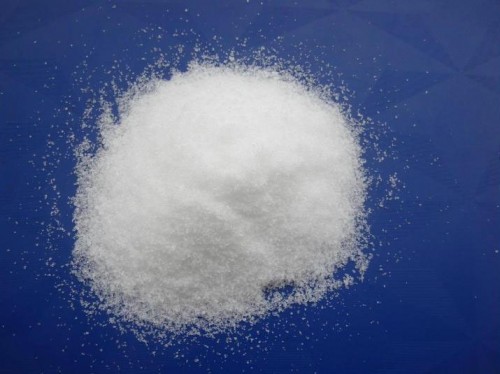Acrylic resin generally refers to acrylic acid, which is the general name for acrylic acid, methacrylic acid and their derivative polymers. Because acrylic resin is light in color, has excellent weather resistance, is not prone to yellowing, is heat-resistant, corrosion-resistant, and has good optical properties, it is widely used in paint and coating film-forming materials.
According to the type of chemical reaction, it can be divided into two categories: thermoplastic and thermoset.
Thermoplastic acrylic resin does not undergo further cross-linking during the film formation process, so its relative molecular weight is relatively large, and it has good gloss and color retention, water resistance and chemical resistance. It has good properties, fast drying, convenient construction, easy construction, recoating and rework. When preparing aluminum powder paint, the whiteness and positioning of aluminum powder are good. Thermoplastic acrylic resin is widely used in automobiles, electrical appliances, machinery, construction and other fields.
Thermosetting acrylic resin refers to a structure with certain functional groups, which are passed through and added in the functional groups of amino resin, epoxy resin, polyurethane, etc. when making paint. The reaction forms a network structure, and thermosetting resins generally have lower relative molecular weights. Thermosetting acrylic paint has excellent fullness, gloss, hardness, solvent resistance, weather resistance, and does not discolor or turn yellow when baked at high temperatures. The most important application is to combine with amino resin to form amino-acrylic baking paint, which is currently widely used in automobiles, motorcycles, bicycles, coiled steel and other products.

Divided according to the type of applied coating, acrylic resin is used in solvent-based paints, water-based paints, and powder coatings.
Among solvent-based paints and paints, they are not only the main variety of weather-resistant outdoor paints, but are also used to modify other resin paints to improve weather resistance, especially automotive topcoats. And top coat varnish, car paint is almost dominated by acrylic resin.
Among water-dispersible coatings, acrylic emulsions are also the only ones. However, in powder coatings, the dosage of acrylic resin is much lower than that of epoxy resin and saturated polyester resin, and even inferior to polyurethane resin.
On the other hand, among the functional additives for powder coatings, acrylic resin is unmatched by other resins. Although the dosage is small, it is widely used and can It is said that acrylic resin can be found almost everywhere in powder coating formulas.
Acrylic resin for powder coating matting
Powder coating is a new solvent-free coating developed in the 1950s. It has low VOC, simple coating process, high raw material utilization rate, and excellent coating film. It is hard, decorative and safe to use. Currently, there are five categories of thermosetting powder coatings widely used in industry: epoxy, epoxy-polyester, polyester, polyurethane and acrylic. Among them, acrylic powder coating has the characteristics of good decoration, stain resistance and weather resistance, and is widely used in Auto parts, outdoor architectural decoration, household appliances and other fields; on the other hand, low-gloss coatings with soft texture and delicate appearance are currently on the market showing a greater upward trend.

The matting of powder coatings generally has the following methods:
a. Non-reactive additives
Powder coatings do not contain solvents or water, which will cause the original wax powder and gas silicone to be unable to produce sufficient matting effects. Due to the lack of solvent and water during the curing process of powder coatings, matting additives cannot be guaranteed to migrate to the surface; too fast a curing speed will also result in limited migration. On the other hand, most non-reactive additives are white or gray and are not suitable for dark matte coatings when wax substances migrate to the surface. And when there are high outdoor weather resistance requirements, these additives are not suitable.
b. Matting of powder coatings
In order to make up for the defect of migration, there are other possibilities: two systems to complete the curing, one initially produces a gel effect, and the other destroys the cured material through shrinkage. surface of the gel. The two systems must remain differentiated or incompatible. The paint matrix needs to be in a continuous two-phase state. Such requirements for the matting of powder coatings include the incompatibility of the two-phase or multi-phase systems contained in the organic components; preferably the two-phase or multi-phase system has different reaction rates or different curing agents. A situation like this is known as dry blend matting of two powder coatings. Under certain conditions, blending can result in lower gloss. but>Acrylic resin and polyester resin have poor compatibility. The former will cause contamination of the latter. From the non-chemical characteristics of acrylic resin, its surface tension is smaller than that of epoxy resin and polyester resin, and it is easy to penetrate and migrate to the surface. And because the surface tension difference is large, the compatibility with epoxy resin and polyester resin is poor.
In addition, the reaction speed between glycidyl group and carboxyl group is very fast. If carboxylic acid is used for curing alone, the glass transition temperature of acrylic resin is very high. It is necessary to find a balance that allows enough glycidyl groups to shrink to obtain a matte surface without affecting the leveling of the paint. Some new extinction reactions from salts and deblocked isocyanates will bring many unexpected effects
Other uncommon matting systems
Crelan VP LS 2181/1, a resin containing isocyanate and carboxylic acid groups commercially produced by Covestro (formerly Germany), can be used with hydroxyl resins and The curing agent with epoxy group reacts, but due to the difficulty of industrial production, the market promotion was finally ended.
The bifunctional polyester produced by Reichhold is used with GMA acrylic resin for matting. There are also mature products on the market, but due to low cost performance, market acceptance is generally at home and abroad. not tall.
The new HAA polyester system matting agent VESTAGON EP-HA 368 launched by Degussa Company has 4 active functional groups, good crystallinity, and the final powder coating product Has great outdoor durability.
There are more powder matting materials that are still being developed and market verified.

 微信扫一扫打赏
微信扫一扫打赏

